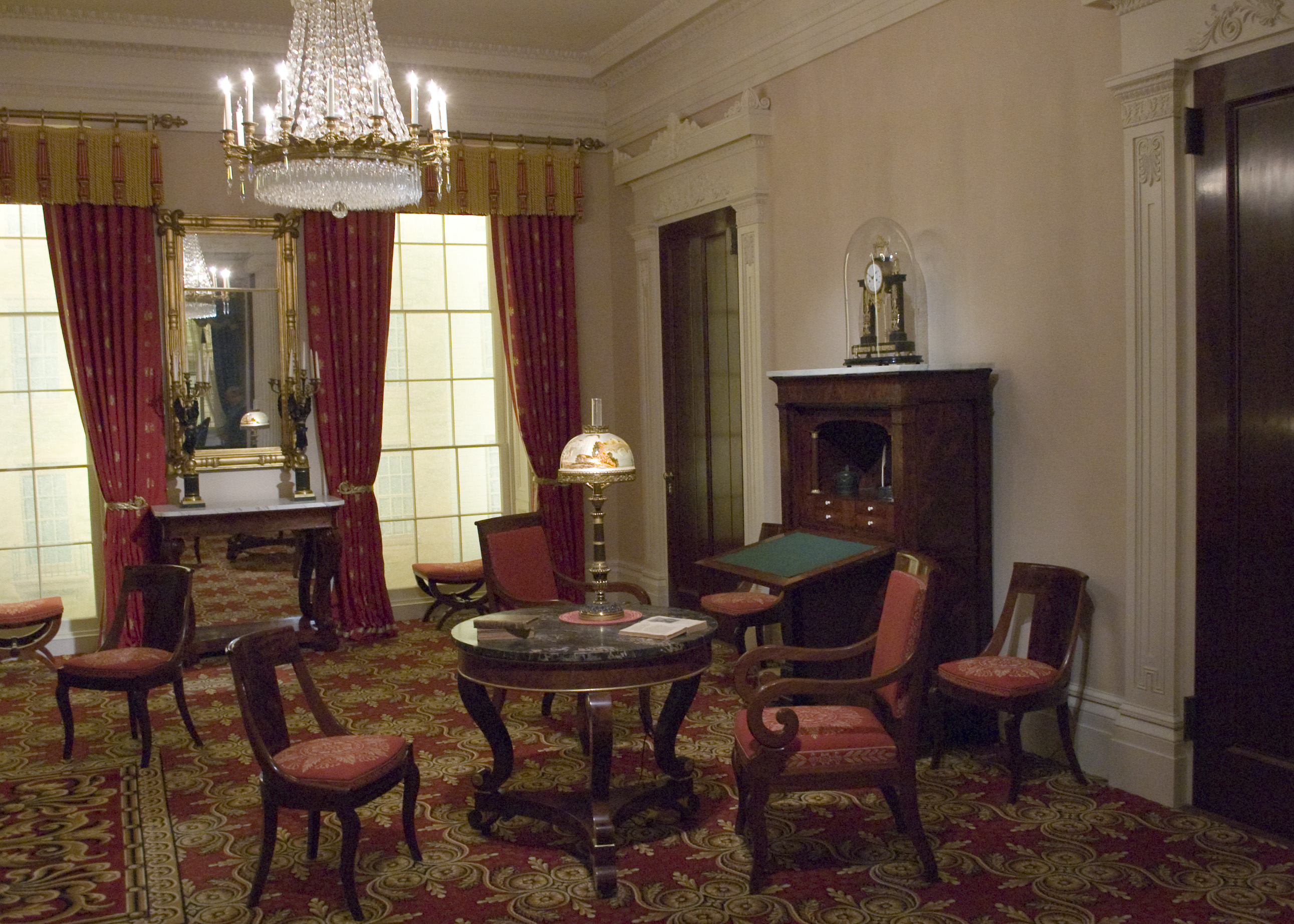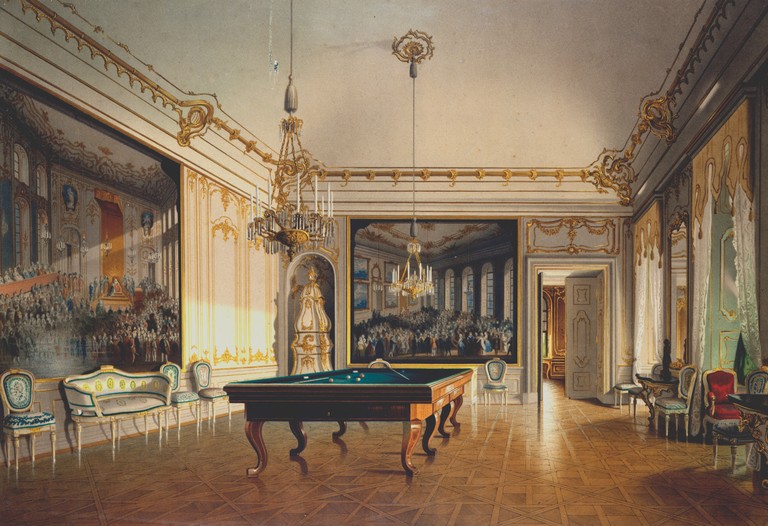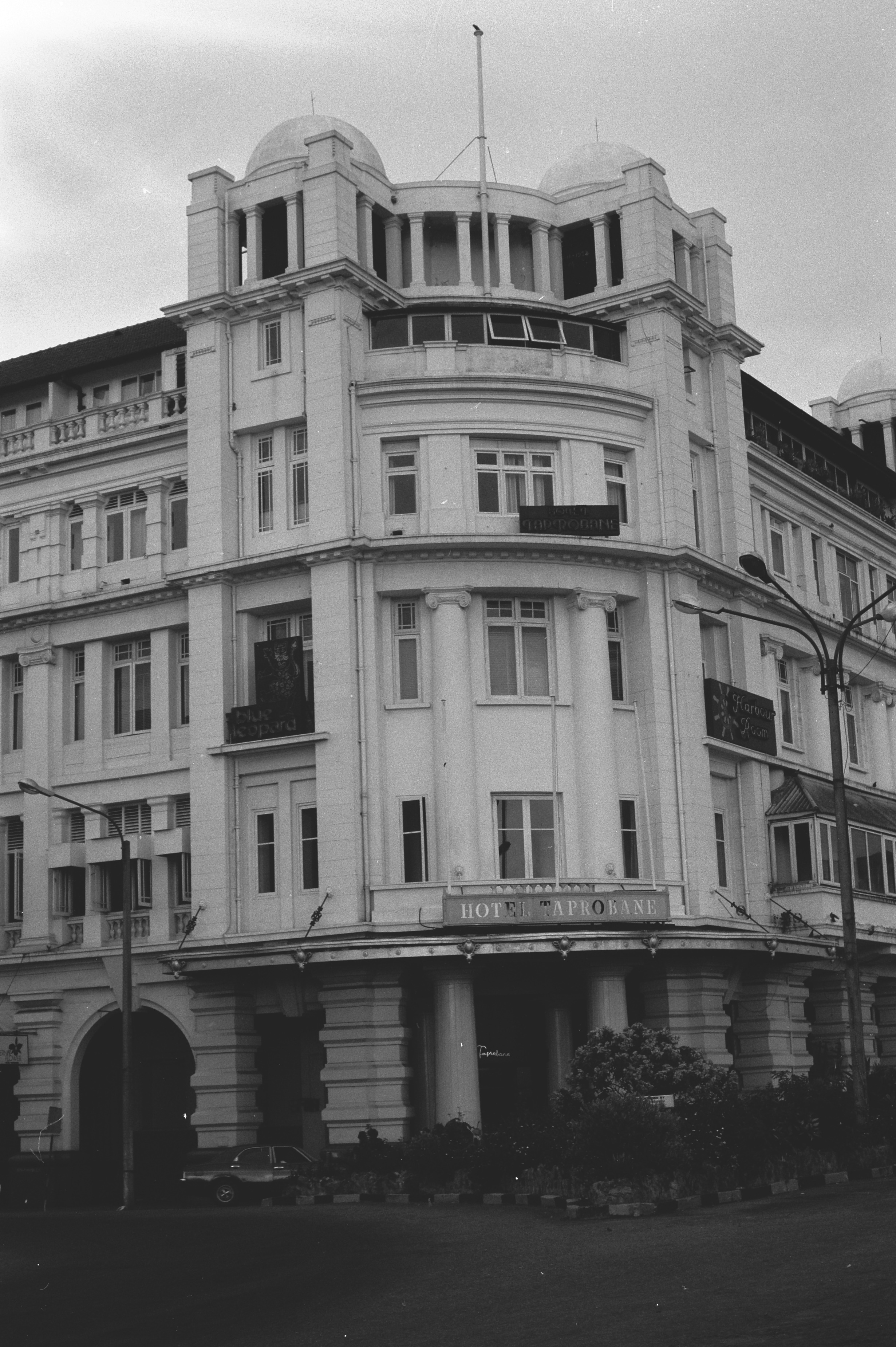|
Royal Hotel, Maryborough
Royal Hotel is a heritage-listed hotel on the corner of Kent Street and Bazaar Street, Maryborough, Fraser Coast Region, Queensland, Australia. It was designed by Eaton & Bates and built from 1892 to 1930s. It was added to the Queensland Heritage Register on 21 October 1992. History The Royal Hotel in Maryborough is a substantial rendered brick building, constructed in 1902 to designs of Messrs Eaton and Bates, architects of Rockhampton. The present hotel was built for Richard Hyne, a local pioneer who developed many local manufacturing and community initiatives. The original township of Maryborough was situated, not in its current place, but on the north of the Mary River, after wharves were established in 1847–1848, to provide transport for wool from sheep stations on the Burnett River. In 1852 the growing town was gradually transferred further north where ships were able to better navigate the river. Development followed and by March 1861, Maryborough was declared ... [...More Info...] [...Related Items...] OR: [Wikipedia] [Google] [Baidu] |
Maryborough, Queensland
Maryborough ( ) is a city and a suburb in the Fraser Coast Region, Queensland, Australia. At the 2021 Census, Maryborough had a population of 15,287. Geography Maryborough is located on the Mary River in Queensland, Australia, approximately north of the state capital, Brisbane. The city is served by the Bruce Highway. It is closely tied to its neighbour city Hervey Bay which is approximately northeast. Together they form part of the area known as the Fraser Coast. The neighbourhood of Baddow is within the west of the suburb near the Mary River. It takes its name from Baddow House, a historic property in the area (). Baddow railway station () and Baddow Island () in the Mary River also take their names from the house. History Original inhabitants, language and culture Evidence of human inhabitation of the Maryborough region stretches back to at least 6,000 years ago. The Gubbi Gubbi (Kabi Kabi) and Batjala (Butchulla) people were the original inhabitants of the r ... [...More Info...] [...Related Items...] OR: [Wikipedia] [Google] [Baidu] |
Wide Bay–Burnett
Wide Bay–Burnett is a region of the Australian state of Queensland, located between north of the state capital, Brisbane. The area's population growth has exceeded the state average over the past 20 years, and it is forecast to grow to more than 430,000 by 2031. It is the subject of the ''Draft Wide Bay–Burnett Regional Plan'', which aims to facilitate this growth while protecting over 90% of the region from urban development. Wide Bay was the name given by the early European explorer James Cook to a coastal indentation as he was sailing past Double Island Point. As the Port of Maryborough developed during the 19th century Wide Bay became well known as ships passed through the area before entering the Great Sandy Strait and the port. Geography The coastal parts of the region are centered on the city of Maryborough. The inland is defined by a series of ranges which create the water of the Burnett River. In the southeast of the region is a coastal area known as Cooloola ... [...More Info...] [...Related Items...] OR: [Wikipedia] [Google] [Baidu] |
Loggia
In architecture, a loggia ( , usually , ) is a covered exterior gallery or corridor, usually on an upper level, but sometimes on the ground level of a building. The outer wall is open to the elements, usually supported by a series of columns or arches. They can be on principal fronts and/or sides of a building and are not meant for entrance but as an outdoor sitting room."Definition of Loggia" Lexic.us. Retrieved on 2014-10-24. An overhanging loggia may be supported by a baldresca. From the early , nearly every Italian |
Parlour
A parlour (or parlor) is a reception room or public space. In medieval Christian Europe, the "outer parlour" was the room where the monks or nuns conducted business with those outside the monastery and the "inner parlour" was used for necessary conversation between resident members. In the English-speaking world of the 18th and 19th century, having a parlour room was evidence of social status. Etymology In the early 13th century, parlor originally referred to a room where monks could go to talk, derived from the Old French word ''parloir'' or ''parler'' ("to speak"), it entered the English language around the turn of the 16th century. History The first known use of the word to denote a room was in medieval Christian Europe, when it designated the two rooms in a monastery where clergy, constrained by vow or regulation from speaking otherwise in the cloister, were allowed to converse without disturbing their fellows. The "outer parlour" was the room where the monks or nuns c ... [...More Info...] [...Related Items...] OR: [Wikipedia] [Google] [Baidu] |
Billiard Room
A billiard room (also billiards room, or more specifically pool room, snooker room) is a recreation room, such as in a house or recreation center, with a billiards, pool or snooker table. (The term "billiard room" or "pool room" may also be used for a business providing public billiards tables; see billiard hall.) The billiard room may be in the public center of the house or the private areas of the house. Billiard rooms require proper lighting and clearances for game playing. Although there are adjustable cue sticks on the market, 5 feet of clearance around the pool table is ideal. Interior designer Charlotte Moss believed that "a billiard room is synonymous with group dynamics. It's where you mix drinks and embark on a little friendly competition..." History Billiards probably developed from one of the late-14th century or early-15th century lawn games in which players hit balls with sticks. The earliest mention of pool as an indoor table game is in a 1470 inventory list ... [...More Info...] [...Related Items...] OR: [Wikipedia] [Google] [Baidu] |
Clerestory
In architecture, a clerestory ( ; , also clearstory, clearstorey, or overstorey) is a high section of wall that contains windows above eye level. Its purpose is to admit light, fresh air, or both. Historically, ''clerestory'' denoted an upper level of a Roman basilica or of the nave of a Romanesque or Gothic church, the walls of which rise above the rooflines of the lower aisles and are pierced with windows. Similar structures have been used in transportation vehicles to provide additional lighting, ventilation, or headroom. History Ancient world The technology of the clerestory appears to originate in the temples of ancient Egypt. The term "clerestory" is applicable to Egyptian temples, where the lighting of the hall of columns was obtained over the stone roofs of the adjoining aisles, through gaps left in the vertical slabs of stone. Clerestory appeared in Egypt at least as early as the Amarna period. In the Minoan palaces of Crete such as Knossos, by contrast, lightwel ... [...More Info...] [...Related Items...] OR: [Wikipedia] [Google] [Baidu] |
Vestibule (architecture)
A vestibule (also anteroom, antechamber, or foyer) is a small room leading into a larger space such as a lobby, entrance hall or passage, for the purpose of waiting, withholding the larger space view, reducing heat loss, providing storage space for outdoor clothing, etc. The term applies to structures in both modern and classical architecture since ancient times. In modern architecture, a vestibule is typically a small room next to the outer door and connecting it with the interior of the building. In ancient Roman architecture, a vestibule ( la, vestibulum) was a partially enclosed area between the interior of the house and the street. Ancient usage Ancient Greece Vestibules were common in ancient Greek temples. Due to the construction techniques available at the time, it was not possible to build large spans. Consequently, many entranceways had two rows of columns that supported the roof and created a distinct space around the entrance. In ancient Greek houses, the prothyru ... [...More Info...] [...Related Items...] OR: [Wikipedia] [Google] [Baidu] |
Sydney
Sydney ( ) is the capital city of the state of New South Wales, and the most populous city in both Australia and Oceania. Located on Australia's east coast, the metropolis surrounds Sydney Harbour and extends about towards the Blue Mountains to the west, Hawkesbury to the north, the Royal National Park to the south and Macarthur to the south-west. Sydney is made up of 658 suburbs, spread across 33 local government areas. Residents of the city are known as "Sydneysiders". The 2021 census recorded the population of Greater Sydney as 5,231,150, meaning the city is home to approximately 66% of the state's population. Estimated resident population, 30 June 2017. Nicknames of the city include the 'Emerald City' and the 'Harbour City'. Aboriginal Australians have inhabited the Greater Sydney region for at least 30,000 years, and Aboriginal engravings and cultural sites are common throughout Greater Sydney. The traditional custodians of the land on which modern Sydney stands are ... [...More Info...] [...Related Items...] OR: [Wikipedia] [Google] [Baidu] |
Cairo
Cairo ( ; ar, القاهرة, al-Qāhirah, ) is the capital of Egypt and its largest city, home to 10 million people. It is also part of the largest urban agglomeration in Africa, the Arab world and the Middle East: The Greater Cairo metropolitan area, with a population of 21.9 million, is the 12th-largest in the world by population. Cairo is associated with ancient Egypt, as the Giza pyramid complex and the ancient cities of Memphis and Heliopolis are located in its geographical area. Located near the Nile Delta, the city first developed as Fustat, a settlement founded after the Muslim conquest of Egypt in 640 next to an existing ancient Roman fortress, Babylon. Under the Fatimid dynasty a new city, ''al-Qāhirah'', was founded nearby in 969. It later superseded Fustat as the main urban centre during the Ayyubid and Mamluk periods (12th–16th centuries). Cairo has long been a centre of the region's political and cultural life, and is titled "the city of a thousand m ... [...More Info...] [...Related Items...] OR: [Wikipedia] [Google] [Baidu] |
Shepheard's Hotel
Shepheard's Hotel was the leading hotel in Cairo and one of the most celebrated hotels in the world from the middle of the 19th century until its destruction in 1952 during the Cairo Fire. Five years after the original hotel was destroyed, a new one was built nearby and was named the Shepheard Hotel. History The hotel was originally established in 1841 by Samuel Shepheard under the name "Hotel des Anglais" (English Hotel), and was later renamed "Shepheard's Hotel". Shepheard, an Englishman who was once described as "an undistinguished apprentice pastry chef", came from Preston Capes, Northamptonshire. He co-owned the hotel with Mr. Hill, Mohammed Ali Pasha's head coachman, and proved to be a successful entrepreneur and businessman. On one occasion, when soldiers staying at the hotel were suddenly moved to Crimea, leaving unpaid bills, Shepheard travelled personally to Sevastopol in order to collect payment. In 1845, Hill relinquished his interest in the hotel, and Shepheard ... [...More Info...] [...Related Items...] OR: [Wikipedia] [Google] [Baidu] |
Colombo
Colombo ( ; si, කොළඹ, translit=Koḷam̆ba, ; ta, கொழும்பு, translit=Koḻumpu, ) is the executive and judicial capital and largest city of Sri Lanka by population. According to the Brookings Institution, Colombo metropolitan area has a population of 5.6 million, and 752,993 in the Municipality. It is the financial centre of the island and a tourist destination. It is located on the west coast of the island and adjacent to the Greater Colombo area which includes Sri Jayawardenepura Kotte, the legislative capital of Sri Lanka, and Dehiwala-Mount Lavinia. Colombo is often referred to as the capital since Sri Jayawardenepura Kotte is itself within the urban/suburban area of Colombo. It is also the administrative capital of the Western Province and the district capital of Colombo District. Colombo is a busy and vibrant city with a mixture of modern life, colonial buildings and monuments. Due to its large harbour and its strategic position along th ... [...More Info...] [...Related Items...] OR: [Wikipedia] [Google] [Baidu] |
Grand Oriental Hotel
Grand Oriental Hotel or GOH (also previously known as the Taprobane Hotel) is a 3 star heritage hotel, located in Colombo, Sri Lanka. History The original building on the site was a simple, single-storey structure with open verandah to the street, inhabited by a Dutch Governor. In 1837 it was converted into barracks for the British Army. In 1873 it was converted into a hostelry, with reconstruction commencing on 23 February and completing 27 October, the same year. The task of converting the Army hostel into a hotel was undertaken by the then Governor Sir Robert Wilmot-Horton, engaging the architect of Public Works Department, James George Smither, who was also responsible for the National Museum of Colombo, Colombo General Hospital and the old Colombo Town Hall. The estimated cost to build the hotel was 2,007 pounds but is noteworthy that the hotel was constructed within one year under the estimate for only 1,868 pounds. The Grand Oriental Hotel was officially opened on 5 N ... [...More Info...] [...Related Items...] OR: [Wikipedia] [Google] [Baidu] |
.jpg)





.jpg)



